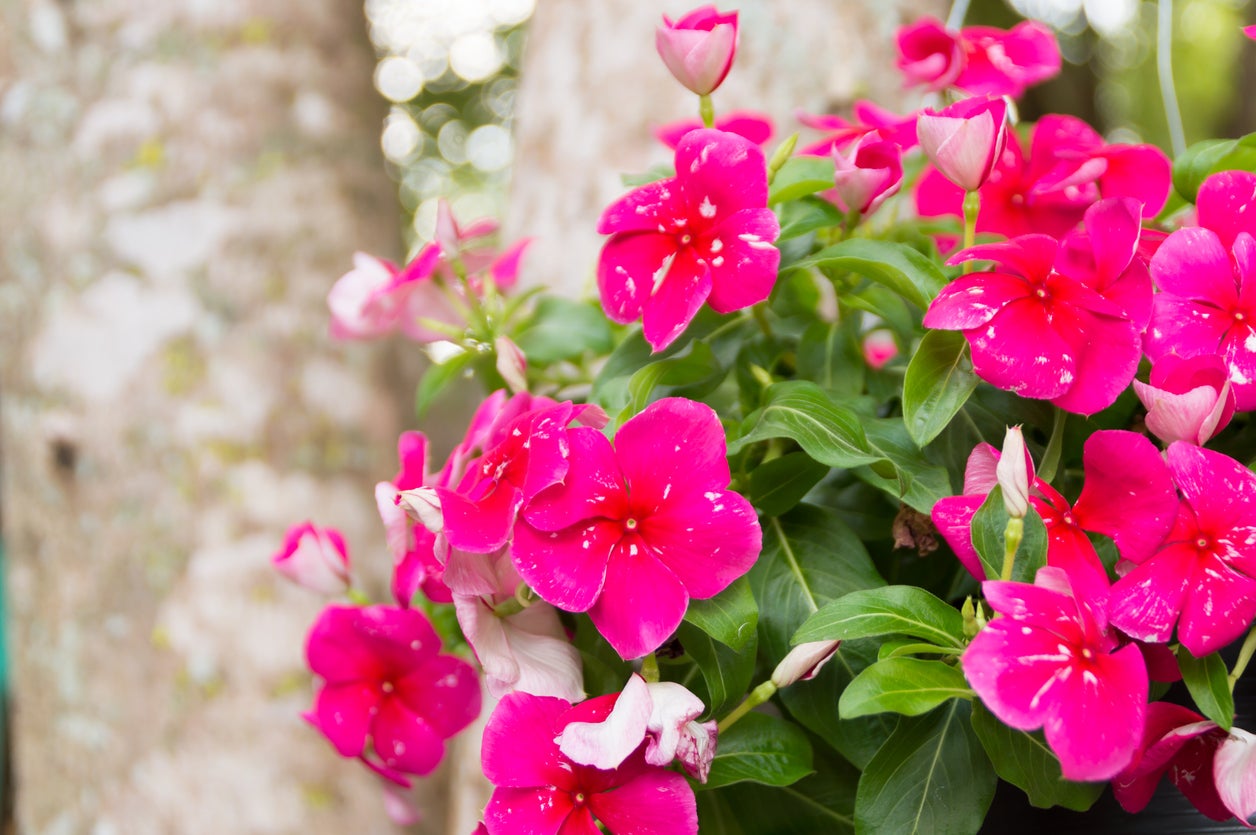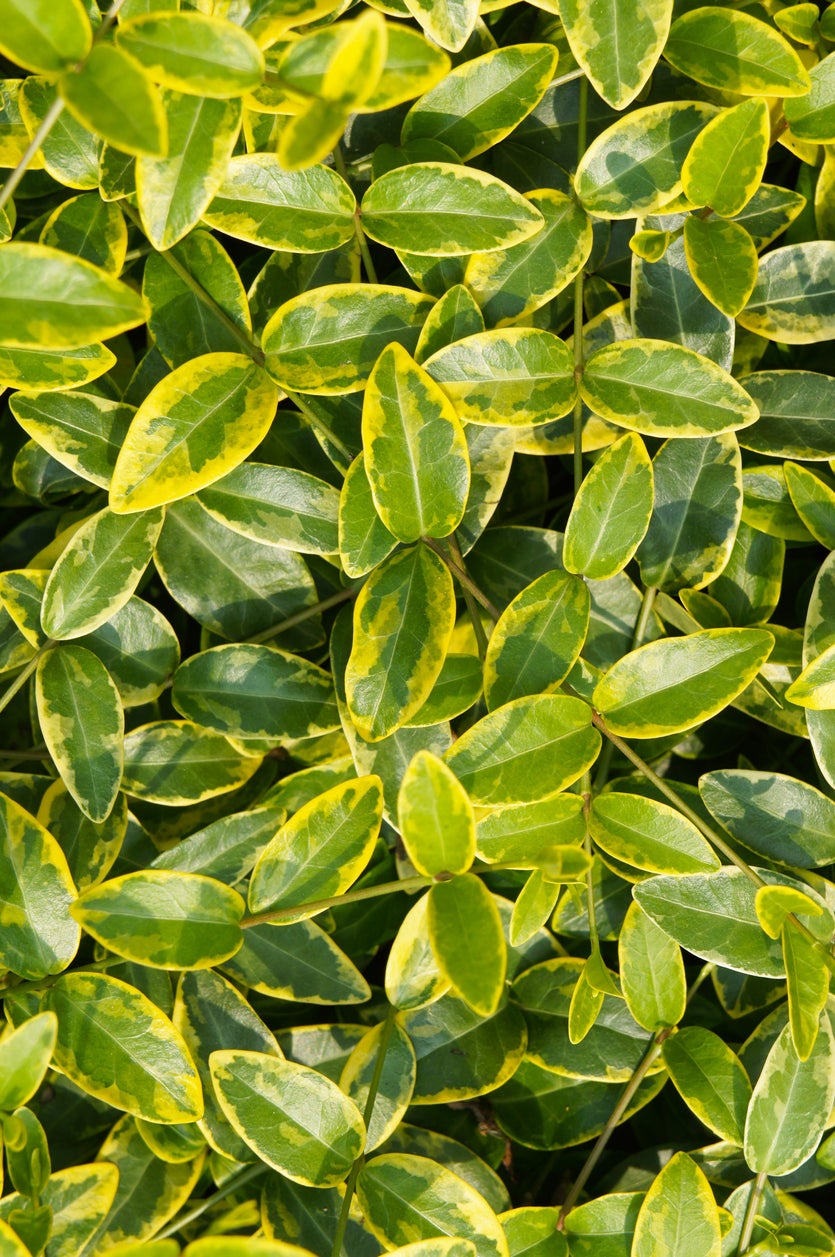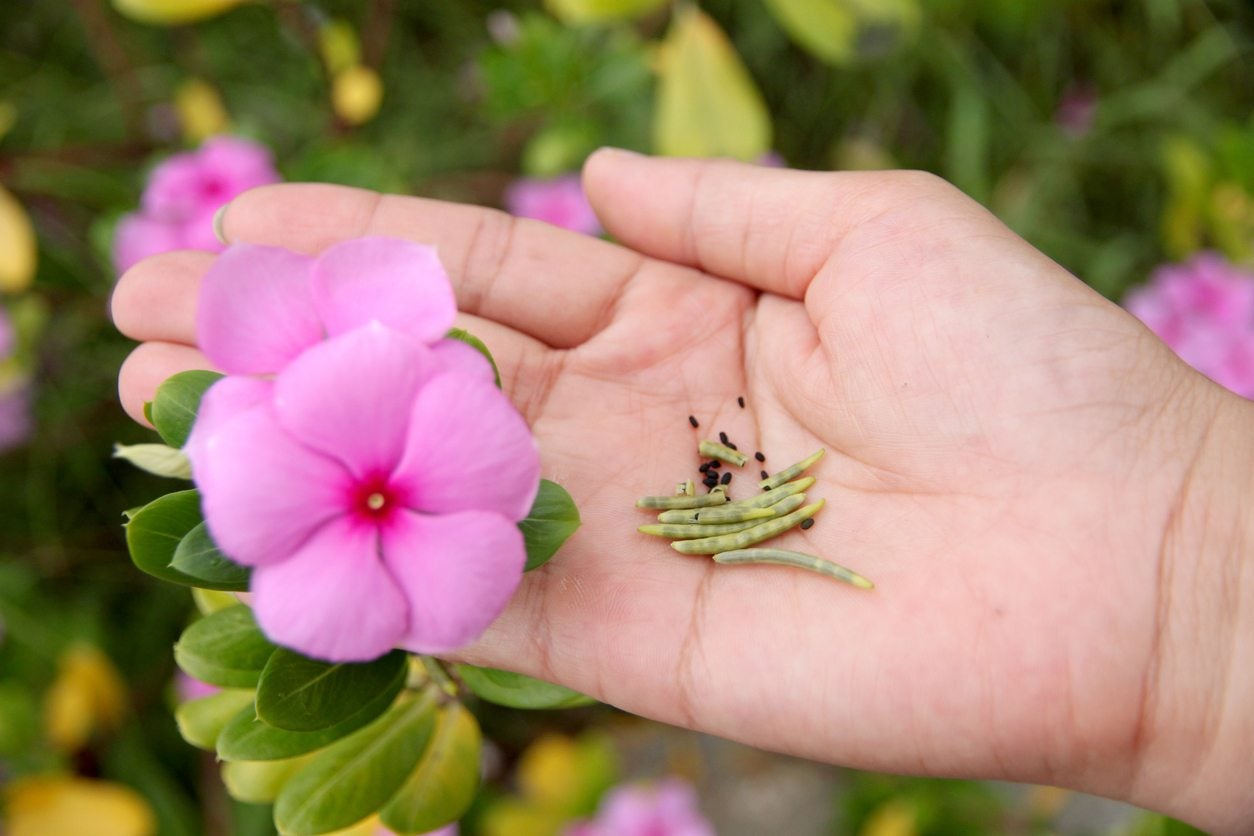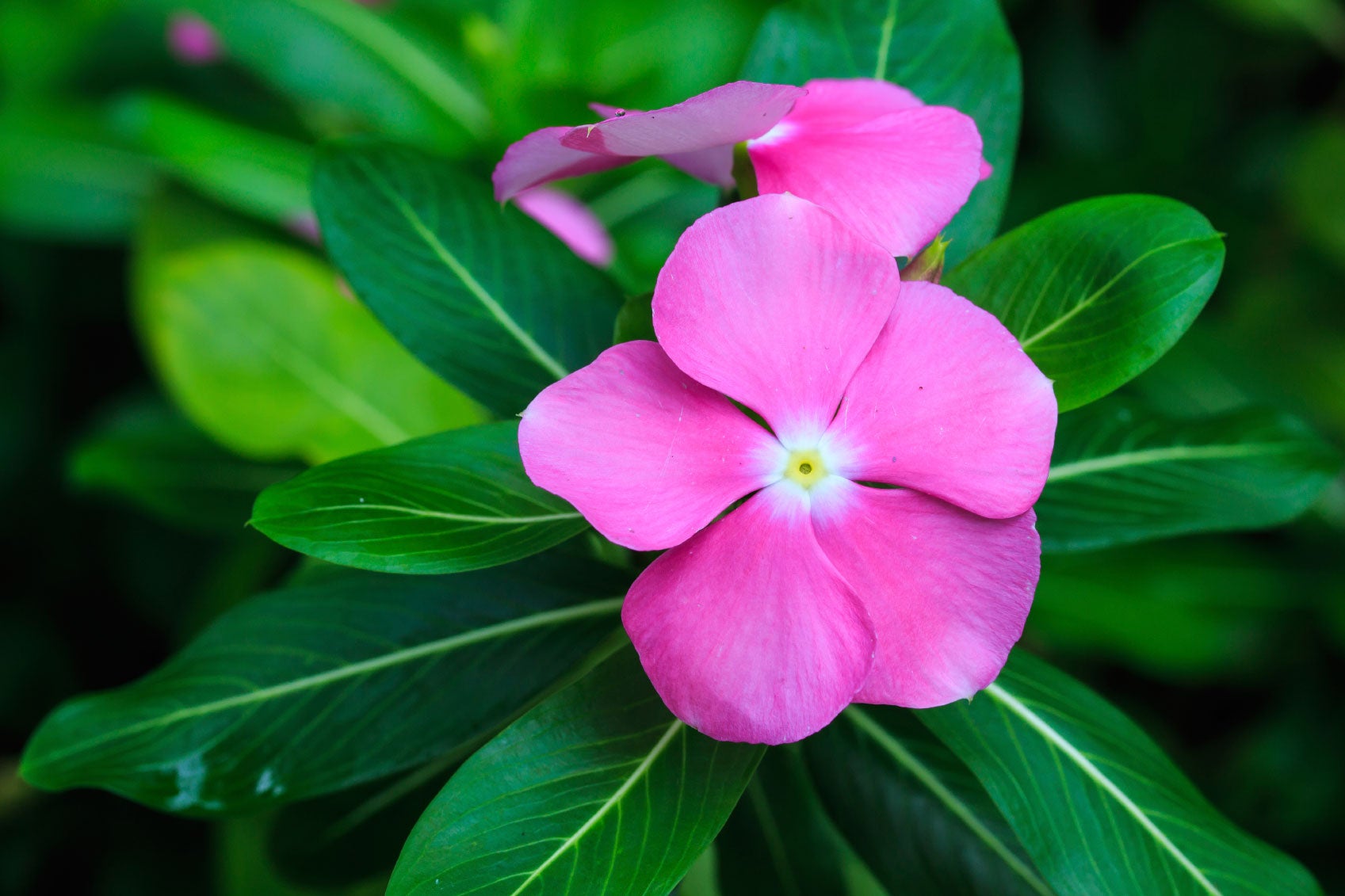Vinca Plants Problems – Common Vinca Insect Pests And Diseases
A lovely bedding plant or groundcover and while it's often easy-care, vinca can have issues with disease, insects and unsuitable growing conditions.


For many homeowners, planning and planting an annual flower bed is a yearly garden routine. Popular bedding plants not only add a vibrant burst of color, but many continue to bloom throughout the entire summer season. One such bedding plant, annual vinca, is an extremely popular choice for growers.
Annual vinca plants are low growing flowering plants that come in a selection of colors, usually white to pink. Also known as annual periwinkle, these plants thrive in a wide range of growing conditions. The ability of vinca to grow and bloom throughout periods of hot weather make it especially popular. However, like many annuals, there are some concerns in regards to pest and disease tolerance.
Vinca Plant Diseases
Problems with vinca can be from a variety of reasons. Most commonly the issues are related to the weather. Growing seasons that have been especially rainy can help contribute to the spread of disease among vinca plants. This may also be compounded when vinca has been planted in less than ideal conditions, as they do require well-draining soil.
Fungal diseases, such as phtyophthora blight and leaf spot, are common among annual vinca plants. When soils are excessively wet, fungal spores are able to reproduce and infect plants. Infected plants first demonstrate signs of infection in the form of yellow to dark brown spots on leaves. As the disease progresses, the plant and roots may begin to rot.
In severe infections, it is possible to lose entire plantings of vinca. While it may be possible to treat the plants with fungicide, many suggest removing infected plants from the garden to prevent spread.
Vinca Insect Pests
Insect attacks on this plant are few but can happen on occasion. Some of the more commonly seen pests on annual vinca plants include aphids, spider mites, scale, and whiteflies. Generally, most of these pests can be controlled with beneficial insects that feed on them or with the use of insecticidal soap or neem oil.
Prevention of Vinca Plant Problems
While not all problems growing vinca can be avoided, there are several ways in which to proactively maintain the health of plants. Providing optimal growth environments will help to reduce vinca insect pests and diseases.
Gardening tips, videos, info and more delivered right to your inbox!
Sign up for the Gardening Know How newsletter today and receive a free copy of our e-book "How to Grow Delicious Tomatoes".
Like many plants, it is important that gardeners prepare well amended and well-draining flower beds before planting. In addition to drainage, vinca plants also require adequate spacing. Proper spacing, which allows air circulation, may help decrease the chance of some forms of blight.
When working to prevent vinca plant diseases, soil conditions are of great importance. Annual vinca plants are unique in that the plants prefer soil that is somewhat acidic.
In addition to acidity, both soil temperature and nighttime temperature should be warm in the spring or early summer before planting. Crop rotation is also beneficial to maintaining a healthy flower bed, especially if disease has been a problem in previous growing seasons.
With suitable growing conditions, the chance of pests or disease of annual vinca is limited, and this heat and drought tolerant plant will reward home gardeners with prolific blooms.

Tonya Barnett has been gardening for 13 years. Flowers are her passion. She has transformed her backyard into a cut flower garden, which she regularly chronicles on her YouTube channel http://www.youtube.com/@tonyawiththeflowers.
-
 Looking For Plants To Give You The Soft And Fuzzies? Try These 5 Fuzzy Leaf Plant Options
Looking For Plants To Give You The Soft And Fuzzies? Try These 5 Fuzzy Leaf Plant OptionsLovers of texture, drama, silver foliage and tactile plants will adore these special sensory garden additions. These fuzzy leaf plant options will leave you all aglow
By Susan Albert
-
 Get Ready For A Summer Of Hummers! Grow These Full Sun Hummingbird Plants and Flowers
Get Ready For A Summer Of Hummers! Grow These Full Sun Hummingbird Plants and FlowersIf you’re lucky enough to enjoy a sunny backyard, make sure you are maxing out on your pollinator opportunities and grow these full sun hummingbird plants and flowers
By Tonya Barnett
-
 My Vinca Is Turning Yellow: What To Do With A Yellowing Vinca Plant
My Vinca Is Turning Yellow: What To Do With A Yellowing Vinca PlantAre the leaves on your vinca plants turning yellow? It may be a disease or soil that isn't draining well. Check your plants' growing conditions first.
By Tonya Barnett
-
 Growing Annual Vinca From Seed: Gathering And Germinating Seeds Of Vinca
Growing Annual Vinca From Seed: Gathering And Germinating Seeds Of VincaAlthough annual vinca isn?t frost-hardy, you can grow it as a perennial if you live in USDA plant hardiness zones 9 and above. Collecting vinca seeds from mature plants isn?t difficult, but growing annual vinca from seed is a little trickier. Learn how here.
By Mary H. Dyer
-
 Madagascar Periwinkle Care: Growing Madagascar Rosy Periwinkle Plant
Madagascar Periwinkle Care: Growing Madagascar Rosy Periwinkle PlantThe rosy periwinkle plant is tolerant of many growing conditions where seasons are warm annually and soil is well draining. Some notes about rosy periwinkle and how and where to grow Madagascar periwinkles can be found in this article.
By Bonnie L. Grant